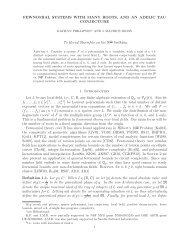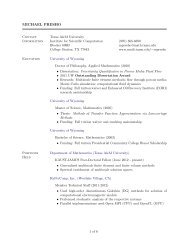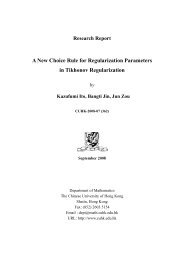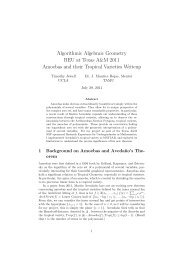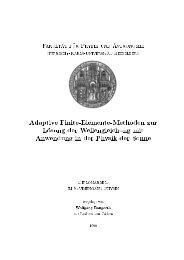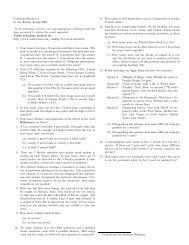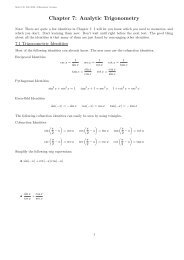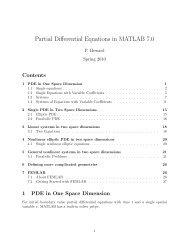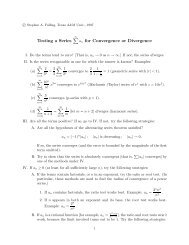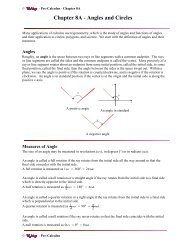Tensors: Geometry and Applications J.M. Landsberg - Texas A&M ...
Tensors: Geometry and Applications J.M. Landsberg - Texas A&M ...
Tensors: Geometry and Applications J.M. Landsberg - Texas A&M ...
Create successful ePaper yourself
Turn your PDF publications into a flip-book with our unique Google optimized e-Paper software.
20 1. Introduction<br />
Given a bipartite graph on (n,n) vertices one can check if the graph has<br />
a complete matching in polynomial time [153]. However there is no known<br />
polynomial time algorithm to count the number of perfect matchings.<br />
Problems such as the marriage problem appear to require a number of<br />
arithmetic operations that grows exponentially with the size of the data in<br />
order to solve them, however a proposed solution can be verified by performing<br />
a number of arithmetic operations that grows polynomialy with the<br />
size of the data. Such problems are said to be of class NP. (See Chapter<br />
13 for precise definitions.)<br />
Form an incidence matrix X = (xi j ) for a bipartite graph by letting<br />
the upper index correspond to one set of nodes <strong>and</strong> the lower index the<br />
other. One then places a 1 in the (i,j)-th slot if there is an edge joining the<br />
corresponding nodes <strong>and</strong> a zero if there is not.<br />
Define the permanent of an n × n matrix X = (xi j ) by<br />
(1.4.2) permn(X) := �<br />
σ∈Sn<br />
<strong>and</strong> observe the similarities with (1.4.1).<br />
x 1 σ(1) x2 σ(2) · · · xn σ(n) ,<br />
Exercise 1.4.2.1: Verify directly that the permanent of the incidence matrix<br />
for the following graph indeed equals its number of perfect matchings.<br />
Exercise 1.4.2.2: Show that if X is an incidence matrix for an (n,n)bipartite<br />
graph Γ, that the number of perfect matchings of Γ is given by the<br />
permanent.<br />
1.4.3. Algebraic variants of P v. NP. Matrix multiplication, <strong>and</strong> thus<br />
computing the determinant of a matrix, can be computed by performing a<br />
number of arithmetic operations that is polynomial in the size of the data.<br />
(If the data size is of order m = n 2 then one needs roughly m 3<br />
2 = n 3<br />
operations, or roughly n 4 if one wants an algorithm without divisions or<br />
decisions, see §13.4.2.) Roughly speaking, such problems are said to be of<br />
class P, or are computable in polynomial time.<br />
L. Valiant [307] had the following idea: Let P(x 1 ,... ,x v ) be a homogeneous<br />
polynomial of degree m in v variables. We say P is an affine<br />
projection of a determinant of size n if there exists an affine linear function<br />
f : C v → Matn(C) such that P = det ◦ f. Write dc(P) for the smallest n



